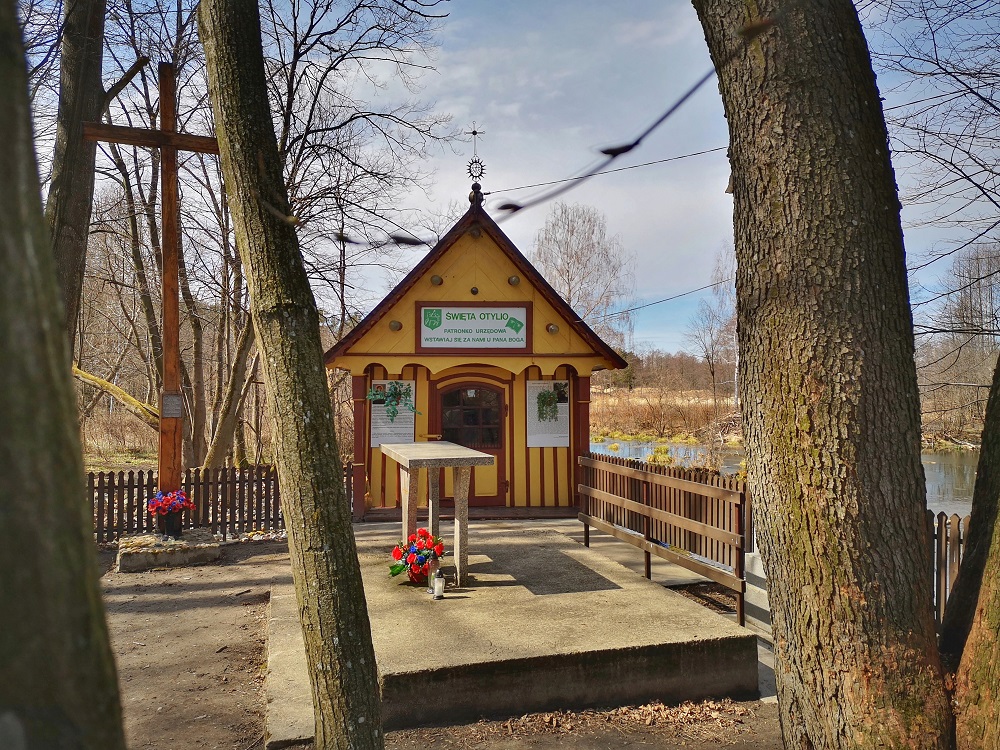Places

The park boasts a scenic network of loessial ravines located in the eastern part of Western Roztocze. The most amazing sites can be seen in the 'Piekiełko' beauty spot situated between Szczebrzeszyn and Wywłoczka, and in the ‘Las Cetnar’ Forest near the village of Kawęczynek. Carpathian beech forests and fir woods are predominant in the area. ...

A village in the Janów Forests. In the 19th c. it belonged to the Zamoyski Estate and had a big glassworks. Next to the village there are vast, fenced pastures of the Biłgoraj Horse – descendants of the extinct Tarpan, and the Szklarnia Nature Reserve. The reserve features old-growth woods, peat-bogs and wetlands and borders in the south with the Janów Forests Reserve, covering the area upon the Branew River where a 1944 partisan battle took place. ...

A town on the route from Lublin to Przemyśl, the former property of the Tarnowski and the Zamoyski Families. The main tourist attraction is the Church of Transfiguration of Christ, erected in the years 1750-71, with a Baroque interior décor and the main altar featuring two paintings by the Italian master Domenico Tintoretto. Other sights include the wooden St. Roch’s Church, Orthodox St. George’s Church, and a synagogue, presently used as the seat of the culture centre known for organising the annual National Convention of Polish Village Theatres. ...

A historic town and commercial centre by the Lviv route established in 1590. The most precious historic landmark is the larch Church of the Annunciation of the Virgin Mary from 1627, rebuilt a century later in the Baroque style, with an 18th-century wooden bell tower. Next to the church stands a pillory used for repentance. In the market square there is an interesting building of the 1895 Tea House, built from thick wooden logs and modelled on Russian tea houses. Nearby stands the Orthodox St. Nicholas’ Church dating from 1890. ...

A town upon the Por River, founded by the Górka Family, from the end of the 16th c. a part of the Zamoyski Estate. St. Dominic’s Parish Church is a local landmark. Originally a Gothic building, it was rebuilt in 1620 in the Lublin Renaissance style by the famous mason and architect Jan Wolff. ...

A village located within the Grabowieckie Divide, by the old royal route leading from Masovia to Kievan Rus. It boasts a late-Renaissance church founded by the Uchański Family (including the Primate of Poland Jakub Uchański). Originally Gothic, at the beginning of the 17th c. it was rebuilt and richly-decorated in the Lublin Renaissance style by Jan Wolff. Inside, by both side walls of the church, there are tombs of the Uchański Family. ...

Serce Polesia Zachodniego, jakie stanowi miejscowość Urszulin, nie posiada sama w sobie zbyt wielu zabytków i atrakcji turystycznych. Otaczają ją jednak tereny bagienno-torfowiskowe o wybitnych walorach przyrodniczych. Współczesna wieś posiadała dawniej prawa miejskie, już na początku XIX w. Warty odnotowania jest fakt, że miejscowość jest siedzibą Dyrekcji Poleskiego Parku Narodowego, który jest jednym z dwóch obszarów najwyższej ochrony przyrody na Lubelszczyźnie. Urszulin pozostaje także doskonałą bazą wypadową na szlaki i ścieżki dydaktyczne przecinające Poleski ...

A town with over 600 years of history, formerly a town. Historic sights include fragments of earth ramparts from the 15th c. and late 19th-century small town architecture with an old inn and cottages. By the springs of the Wyżnica River stands the Chapel of St. Odile of Alsace. The Urzędów area has long-standing pottery traditions dating back to the 16th c. In nearby Będzin there is a pottery centre of the Gajewski Family with a fully operational workshop. ...

A village on the Nałęczów Plateau with over 700 years of history, formerly a royal town with a castle built by King Casimir the Great. The place is famous for the cult of Our Lady of Kębło, whose miraculous statue from 1440 is held in the Gothic chapel next to the Neo-Gothic St. Adalbert’s Church. The church was built in the years 1907-14 and features another Gothic sculpture of Our Lady created in the 14th-15th c. Nearby there is a pilgrim’s house and a parish museum. A copy of the statue of Our Lady of Kębło can be seen in a chapel in Kębło commemorating Marian apparitions ...

A village at the fork of the Vistula River and the Chodelka River with fertile lands and well-developed hop-growing and fruit-farming. The most interesting historic sights are the Church of St. Florian and St. Ursula, the Powiślak Inn from the mid-19th c., the palace of the Kleniewski Family and the old agricultural farm in Szczeraków (from the 19th and 20th c.) ...
Page 14 of 16









.jpg)
